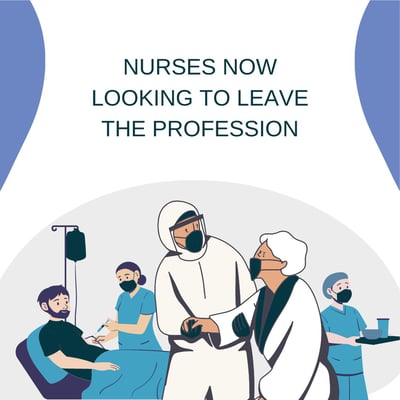National Nurses Week is a special week dedicated to honoring the contributions of nurses to their...
Nurses Now Looking to Leave the Profession
Hospitals across the country are continuing to see a decline in nurses as some are looking to leave the profession altogether. This was an issue before the Covid-19 pandemic but became more evident after the pandemic. This can cause a plethora of issues, such as hazardous working conditions and staff turnover.

The U.S. The Bureau of Labor Statistics (BLS) projects that the number of registered nurses could increase from 3 million in 2019 to 3.3 million a decade later. That's an increase of about 7.2%. A survey conducted by Nurse.com found that 29% of nurses are considering leaving their current profession, this is up 11% from the year before.
Another survey from Incredible Health revealed several reasons why nurses were leaving the profession altogether:
- 44% cited burnout and high-stress environments
- 27% said pay and benefits were a cause
- 42% started a new nursing role and said higher pay was a motivating factor
- Other reasons include a better schedule, career advancement, and better staffing overall
The loss of nurses across the country can lead to unsafe staffing levels in healthcare facilities. This can lead to hazardous working conditions, an increase in nurse-to-patient ratios, staff turnover, and dangerous working conditions. Which can lead to more nurse burnout.
How can nurses handle burnout?
The CDC offers a few tips when it comes to managing fatigue for healthcare workers. This includes getting plenty of sleep, avoiding alcohol, finding a buddy to do check-ins with and see how each other is coping, watching for signs and symptoms of fatigue, and reporting to a manager if you feel you are too fatigued to work.
How can FleetNurse help?
FleetNurse helps improve staffing levels and reduces staffing-related costs for facilities while providing nurses and nursing assistants flexibility in their work lives. Using innovation and technology, FleetNurse has become a trusted labor partner that connects health systems to quality healthcare providers on demand. Healthcare professionals are allowed to work on a schedule that works for them, while healthcare facilities are able to fill shifts at the last minute.
.png?width=300&height=104&name=FleetNurse_var1_color@4x%20(4).png)
.jpg?height=200&name=Blue%20Clean%20Nurses%20Day%20Instagram%20Post%20(Facebook%20Ad).jpg)
.jpg?height=200&name=Black%20and%20Brown%20Professional%20Blog%20Article%20Promotion%20LinkedIn%20Post%20(1).jpg)
